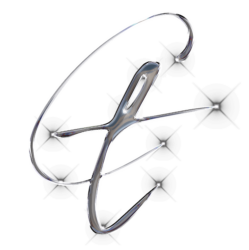Building upon the foundational insights from Unlocking Hidden Strategies in Decision-Making Today, this article delves into how leveraging intuition can serve as a vital bridge to uncover and activate subconscious strategic patterns. Recognizing and cultivating intuitive insights empowers decision-makers to access a deeper layer of strategic awareness, often overlooked in traditional analytical approaches.
1. Introduction: From Hidden Strategies to Intuitive Insights in Decision-Making
In a world characterized by rapid change and increasing complexity, relying solely on conscious strategies may limit our ability to adapt swiftly and effectively. Hidden strategic patterns often operate beneath our awareness, influencing decisions without explicit recognition. However, by developing our intuitive faculties, we unlock a pathway to access these subconscious cues, transforming intuitive insights into powerful tools for strategic decision-making.
“Intuition acts as an internal compass, guiding us toward opportunities and warnings that our rational mind may overlook.”
2. The Science of Intuition in Decision-Making
a. Cognitive processes underpinning intuitive judgments
Research in cognitive psychology indicates that intuitive judgments stem from rapid, subconscious pattern recognition based on accumulated experience. Experts in fields such as medicine, chess, and finance often rely on this “gut feeling” to make split-second decisions, which are backed by mental schemas developed over years of practice.
b. Neuroscientific evidence: How the brain processes intuitive signals
Neuroscientific studies reveal that areas such as the insula and the ventromedial prefrontal cortex play crucial roles in processing intuitive signals. These regions activate rapidly in response to subtle cues, often before conscious awareness kicks in, allowing for quick yet informed responses.
c. Differentiating intuition from bias and heuristics
While intuition can be a valuable guide, it requires discernment to distinguish genuine insights from cognitive biases or heuristics. For instance, the availability heuristic may cause us to overestimate recent events, clouded judgment. Recognizing this distinction is critical to harnessing intuition effectively.
3. Recognizing and Cultivating Intuitive Cues
a. Identifying subtle signals and feelings that guide quick decisions
Intuitive cues often manifest as physical sensations, emotional responses, or fleeting impressions. For example, a sudden feeling of unease might signal underlying issues in a business proposal. Developing sensitivity to these signals involves heightened awareness and reflection on one’s internal state.
b. Developing awareness through mindfulness and reflective practices
Practices such as meditation, journaling, and mindful observation can enhance awareness of internal cues. Regular reflection enables decision-makers to recognize patterns in their intuitive signals, fostering trust over time.
c. The role of experience in sharpening intuitive perception
Experience enriches intuitive perception by building mental schemas. For instance, seasoned investors often sense market shifts before they become evident through data, thanks to their deep familiarity with market dynamics.
4. Practical Techniques to Harness Intuition for Better Decisions
a. Incorporating intuitive assessments into structured decision frameworks
Integrating intuition into decision frameworks involves using it as a complementary tool alongside analytical methods. For example, after conducting a thorough analysis, a manager might pause to reflect on their gut feeling about a strategic move, ensuring a holistic perspective.
b. Balancing analytical reasoning with gut feelings in complex scenarios
In complex or uncertain situations, balancing data-driven analysis with intuitive insights can lead to more nuanced decisions. A case in point is NASA’s use of intuitive judgment during mission-critical scenarios, where rapid decisions are required under uncertainty.
c. Case studies: Successful intuitive decision-making examples
| Scenario | Outcome |
|---|---|
| Emergency room doctor diagnosing patients under pressure | Rapid, accurate diagnoses often based on subtle cues, leading to life-saving interventions |
| Financial trader reacting to market signals | Timely trades driven by intuitive recognition of market shifts, resulting in significant gains |
5. Overcoming Barriers to Trusting Intuition
a. Common fears and misconceptions about intuition’s reliability
Many perceive intuition as unreliable or unscientific, leading to hesitation in trusting gut feelings. This skepticism often stems from a preference for rational, data-based decisions or past experiences where intuition led astray.
b. Strategies to validate intuitive insights without over-reliance
Validating intuition involves cross-checking feelings with evidence or seeking feedback. For example, if an initial gut feeling suggests a partnership is risky, verifying this perception through due diligence can build confidence.
c. Cultivating confidence in intuitive judgments through practice and reflection
Regularly reflecting on past intuitive decisions, analyzing their outcomes, and learning from mistakes reinforce trust in one’s intuitive abilities. Over time, this practice converts fleeting impressions into reliable strategic insights.
6. Integrating Intuition with Hidden Strategic Approaches
a. How intuitive insights can reveal subconscious strategic patterns
Intuitive impressions often signal underlying strategic themes that are not immediately obvious. Recognizing these cues can help uncover patterns such as emerging market trends or internal organizational dynamics, aligning with the broader theme of unlocking hidden strategies.
b. Enhancing strategic planning by tapping into intuitive signals
Strategic planners can incorporate intuition by conducting reflective sessions where team members share subconscious insights, fostering innovative thinking and proactive strategy development.
c. Synergizing conscious strategies with intuitive awareness for optimal outcomes
Combining analytical models with intuitive insights creates a dynamic decision-making process that adapts to changing environments, unlocking the full potential of hidden strategic insights.
7. Advanced Perspectives: The Role of Emotional Intelligence and Intuition in Decision Mastery
a. Emotional awareness as a foundation for intuitive clarity
Emotional intelligence enables us to recognize our own feelings and those of others, creating a fertile ground for intuitive clarity. Recognizing emotional cues helps distinguish genuine insights from emotional biases.
b. Managing emotional biases to improve intuitive accuracy
Techniques such as cognitive reframing and mindfulness can mitigate biases like fear or overconfidence, thus refining intuitive judgments.
c. Developing decision mastery through emotional and intuitive integration
Leaders who integrate emotional intelligence with intuitive skills often demonstrate superior decision-making, especially in high-stakes environments, fostering resilience and adaptability.
8. From Individual Intuition to Collective Decision-Making
a. Harnessing group intuition and collective subconscious signals
Group intuition can be cultivated through structured dialogue and shared reflection, tapping into collective subconscious cues that inform strategic consensus.
b. Facilitating intuitive consensus in team environments
Techniques like the Nominal Group Technique or Delphi method incorporate intuitive insights by encouraging silent reflection before open discussion, reducing biases and promoting authentic consensus.
c. Building organizational culture that values and leverages intuitive insights
Organizations that foster psychological safety and promote reflective practices empower employees to trust and share intuitive insights, strengthening strategic agility.
9. Conclusion: Reconnecting with Hidden Strategies through Intuitive Mastery
Enhancing decision-making effectiveness involves more than analyzing data; it requires reconnecting with our innate intuitive capabilities. As we’ve explored, intuitive awareness not only complements but also deepens our understanding of hidden strategic patterns, allowing us to make more informed, agile decisions. Developing these skills demands ongoing practice, reflection, and a willingness to trust subconscious signals.
By integrating intuition with conscious strategies, leaders and decision-makers unlock a profound reservoir of insight, enabling them to navigate complexity with confidence. Embracing this holistic approach aligns seamlessly with the broader goal of unlocking hidden strategies in decision-making today and building resilient, innovative organizations.

